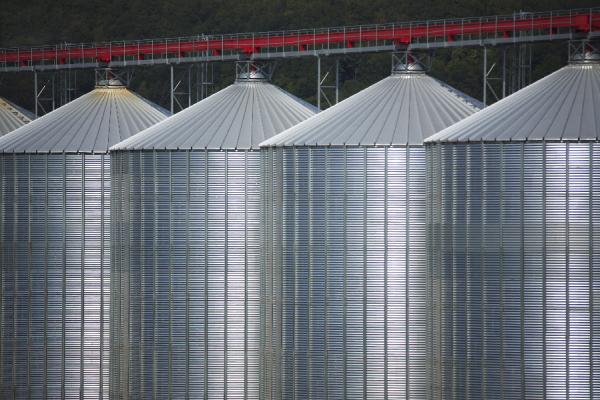Post-Harvest Integrity

Outcome
Post-harvest grain biosecurity.
Goal
Maximise the value, integrity, and competitive advantage of Australia’s post-harvest supply chain.
Indicators of success
Economic:
Strategy for extending the useful life of phosphine to support market access outcomes for Australian grains.
Science:
New knowledge underpinning strategies to manage phosphine resistance is accepted by peers through publication.
Policy:
Standardised detection and measurement of resistance to phosphine is accepted by end-users.
Capacity/Collaboration:
Improved phosphine resistance management practice both on-farm and in all sectors of the post-harvest grains supply chain.
Impact/Adoption:
New tools to optimise chemical applications in grain storage are adopted by end users.
Post-Harvest Integrity Research Projects
| Title | Leader |
| CRC50059: Fumigation Technology | Mr James Darby |
This project investigated options to overcome the cause of deficient fumigation, sustain the life of phosphine and enable the effective application of new fumigants. It will develop an integrated more | |
| CRC50060: Cool Grain Fumigation | Dr Greg Daglish |
Increasing applications of phosphine to stored grain in silos that leak, or grain stored under the wrong conditions, has caused problems with insect pests building up resistance. Proof is needed more | |
| CRC50089: Grain Insect Ecology | Dr Greg Daglish |
Resistance to phosphine in target pests threatens market access for Australian grain. While the grains industry is now attempting to develop an effective and sustainable strategy to manage this more | |
| CRC50091: Ensuring Effective Phosphine Application | Mr Greg Hopkins |
The aim of this project is to experimentally determine and mathematically model the movement of phosphine fumigant in large grain storages and its associated efficacy. This information will then more | |
| CRC50092: Alternatives to phosphine review | Dr Patrick Collins |
This review will provide the CRCNPB with a basis for strategic investment into the technologies that have the potential to be developed into effective insect control systems compatible with grain more | |
| CRC50098: Fumigation Protocols for Flat Grain Beetles | Dr Manoj Nayak |
Flat grain beetle (FGB) is a major emergency plant pest (EPP) of stored grain in Australia. Populations of FGB have recently developed high level resistance to phosphine (the only viable fumigant more | |
| CRC50116: Resistance Monitoring | Dr Manoj Nayak |
A range of naturalised harmful plant storage pests including beetles, psocids, moths and mites habitually threaten the food safety, market access, trade and the overall profitability and more | |
| CRC50147: Low oxygen technology for alternative to phosphine | Dr YongLin Ren |
This project aimed to develop cost-effective, readily adoptable alternatives to a phosphine fumigant that will control resistant insects and comply with industry and market more | |
| CRC50150: Targeting mechanisms of phosphine resistance in stored grain pests | Dr David Schlipalius |
| CRC50151: Resistance Monitoring (Phase 2) | Dr Manoj Nayak |
A range of naturalised harmful plant storage pests including beetles, psocids, moths and mites habitually threaten the food safety, market access, trade and the overall profitability and more | |
| CRC50177: Australian Grain Insect Resistance Database - data mining | Dr Patrick Collins |
The aim of this pilot project was to develop a statistical methodology for analysing the database so that insights into resistance development might be obtained. Research more | |
| CRC50188: Dispersal and resource use by the lesser grain borer (Rhyzopertha dominica) in southern New South Wales | |
This project looked at two aspects of the biology of lesser grain borer, dispersal ability and potential use of food sources other than stored grains. Research outcomes:We more | |
PROGRAM LEADER
Dr Patrick Collins
Program Leader Post-Harvest Integrity
Email: p.collins@crcplantbiosecurity.com.au
Phone: 07 3255 4467
Fax: 07 3846 6371
Read More
STRATEGIC OBJECTIVE
To undertake innovative research to develop cost-effective solutions and technologies for the post-harvest supply chain.

